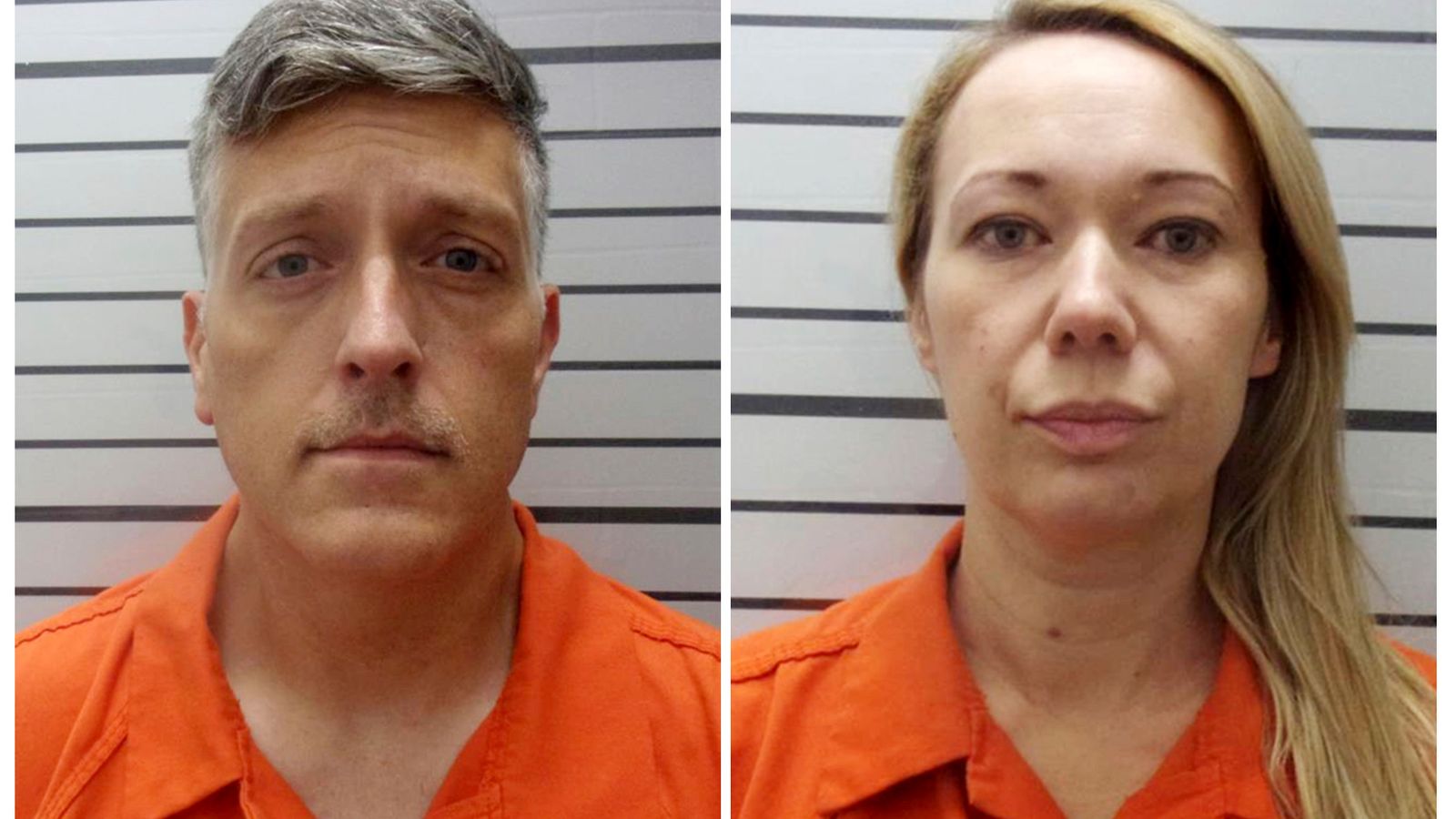
The husband of a woman who disappeared around New Year’s Day made a series of disturbing Google searches – including “10 ways to dispose of a dead body if you really need to” – in the minutes before he told police he had last seen her, prosecutors have said.
Brian Walshe, who lived with his wife in Massachusetts, also searched for “how to stop a body from decomposing” after Ana Walshe, 39, went missing.
Ms Walshe has still not been found and is presumed to be dead.
Walshe, 47, is accused of assaulting and beating his wife with intent to murder her and moving her body or remains, according to a criminal complaint.
He has pleaded not guilty to the charges.
Walshe had made an internet search on 27 December for “what’s the best state to divorce for a man”, prosecutors at Quincy District Court in Massachusetts said.
“Rather than divorce, it is believed that Brian Walshe dismembered Ana Walshe and discarded her body”, Norfolk County Assistant District Attorney Lynn Beland said.
Ms Beland said investigators found the couple’s DNA, a hacksaw, shears and a hatchet in bags that had been disposed of in a rubbish container at Walshe’s mother’s apartment complex in Swampscott, about 40 miles north of Cohasset, where they lived.
In the early morning hours of 1 January, in the hour before he originally told investigators that his wife had left their home to catch a flight to Washington DC, prosecutors said he made dozens of disturbing Google searches on his son’s iPad including “how long before a body starts to smell”, “how to bound a body”, “how long for someone to be missing to inherit”, and “can you throw away body parts”.
He is accused of making further Google searches later that morning such as “how long does DNA last”, “can identification be made on partial remains” and “dismemberment and the best ways to dispose of a body”.
Walshe also allegedly searched for “how to clean blood from wooden floor”, “what happens when you put body parts in ammonia”, and “is it better to throw crime scene clothes away or wash them”.
The next day, on 2 January, Walshe’s internet searches included “hacksaw best tool to dismember”, “can you be charged with murder without a body”, and “can you identify a body with broken teeth”, prosecutors said.
Walshe is accused of buying three rugs at a HomeGoods store the same day.
He also bought cleaning products, mops, brushes, tape, a tarpaulin, a protective suit with boot covers, buckets, goggles, baking soda and a hatchet at a Home Depot store in Rockland, prosecutors said.
On 3 January, a surveillance video captured Walshe travelling to a site with rubbish containers in Abington, a town about 15 miles southwest of Cohasset, where he was seen carrying and discarding items that appeared to be heavy.
He then travelled to an apartment complex in Abington and another in Brockton, about four miles west of Abington, where he discarded more items.
Police later tried to track down the bags he was seen putting in rubbish bins in the first location in Abington, but they had already been destroyed after having been picked up and transported for shredding and incineration, prosecutors said in court.
Walshe also allegedly conducted more Google searches that day, including: “what happens to hair on dead body?”, “what is the rate of decomposition of a body found in a plastic bag compared to on a surface in the woods?” and “can baking soda make a body smell good?”.
On 4 January, the day Ms Walshe’s employer reported her missing and police interviewed Walshe at his home, he bought items including towels, bathmats, men’s clothing and a rubbish bin, prosecutors said.
When authorities arrived at the house, they saw Walshe’s Volvo had a plastic liner and the seats were down; a few days later, the liner was gone and there were fresh vacuum streaks on the carpet, prosecutors said. Analysis later showed blood in the car.
On 5 January, the day the search for Ms Walshe became public, Walshe’s phone records show he travelled first to a day care centre and then to his mother’s apartment complex in Swampscott.
Surveillance video captured him in an area of the complex where more rubbish containers were located.
Authorities later searched the contents of the containers after they had been moved to a waste transfer station and found 10 rubbish bags that included stains consistent with blood.
A protective suit was found in the rubbish bags.
On 8 January, prosecutors searched the family’s home and found blood in the basement, a damaged knife with blood on it, another knife, a heavy-duty large tarpaulin and plastic liners.
Police arrested Walshe the same day.
Phone records indicated Ms Walshe’s mobile device was at her family home on New Year’s Eve until 3.14am on 2 January, at which point it was turned off, prosecutors said.
Walshe showed little to no emotion when he appeared in court on Wednesday.
In a lengthy statement, Walshe’s lawyer, Tracy Miner, claimed the media “has already tried and convicted” him.












